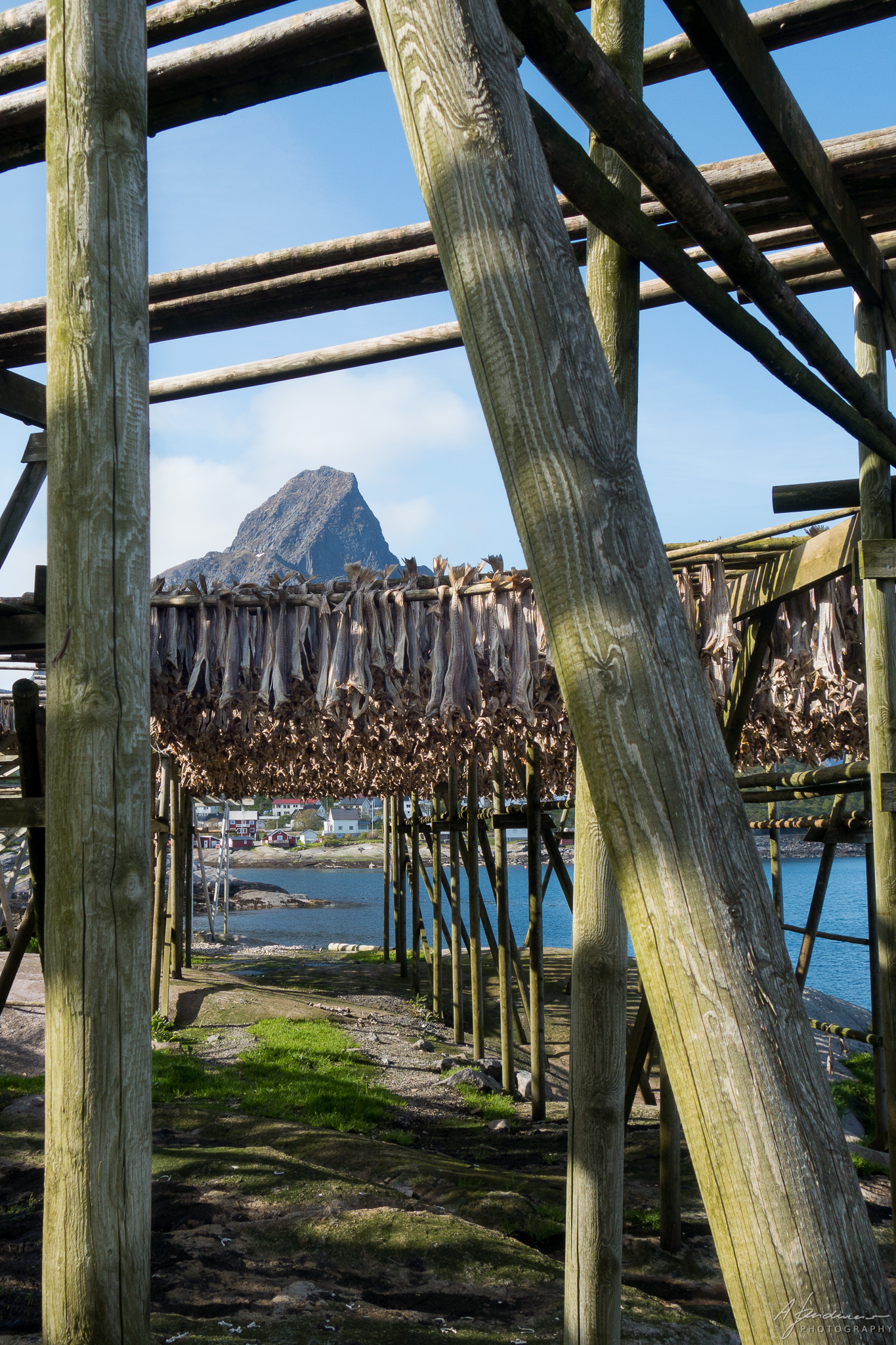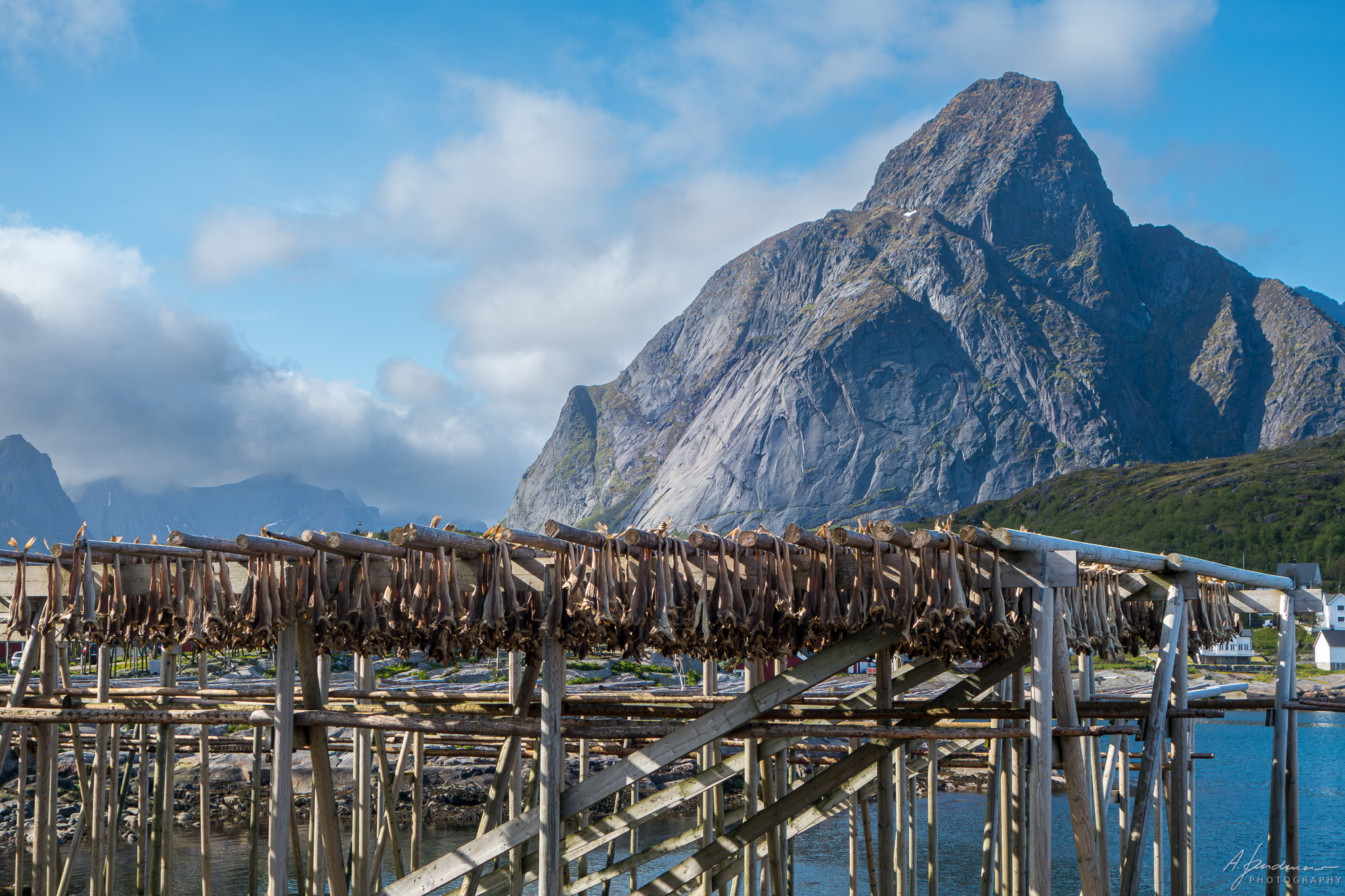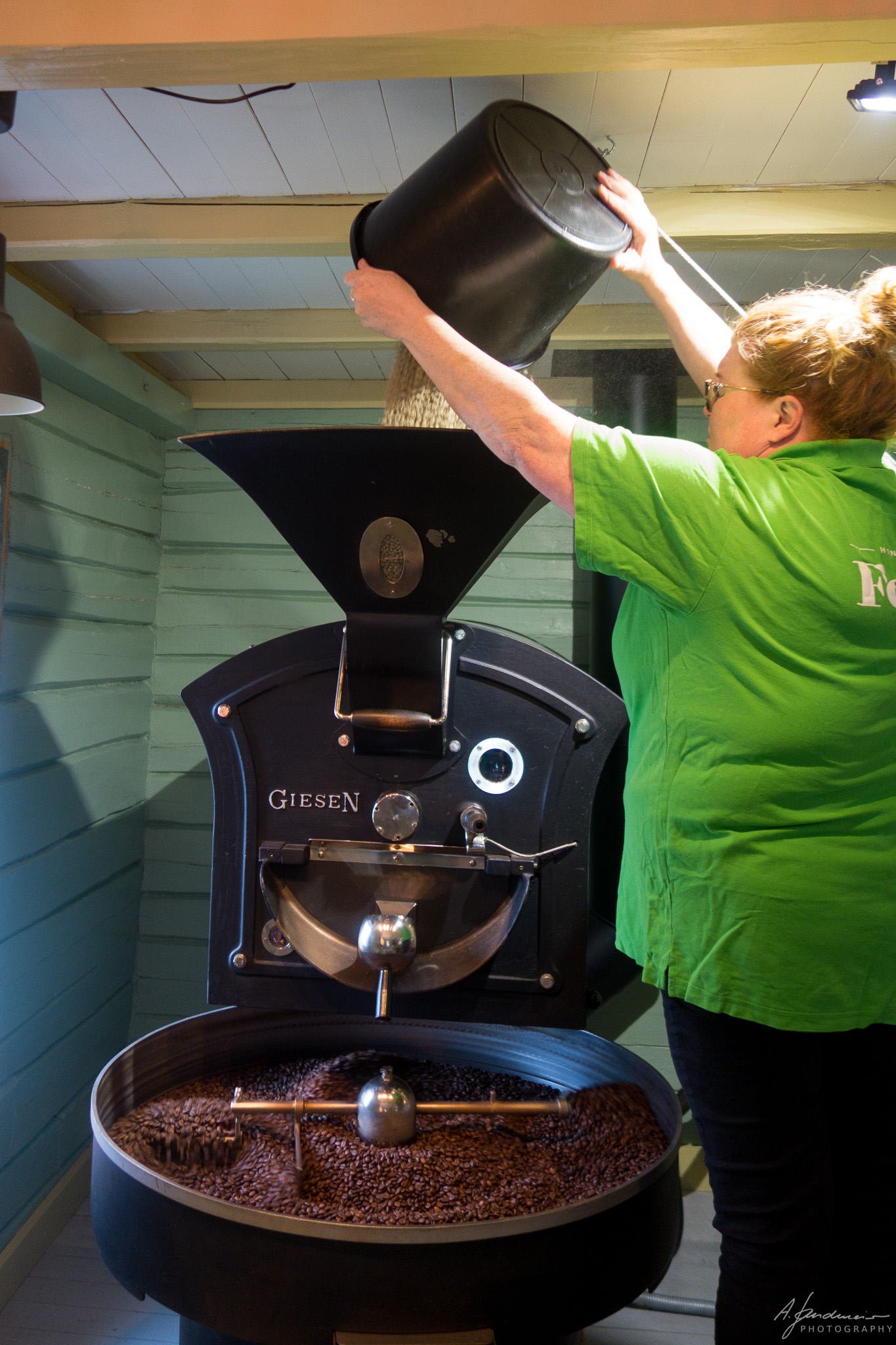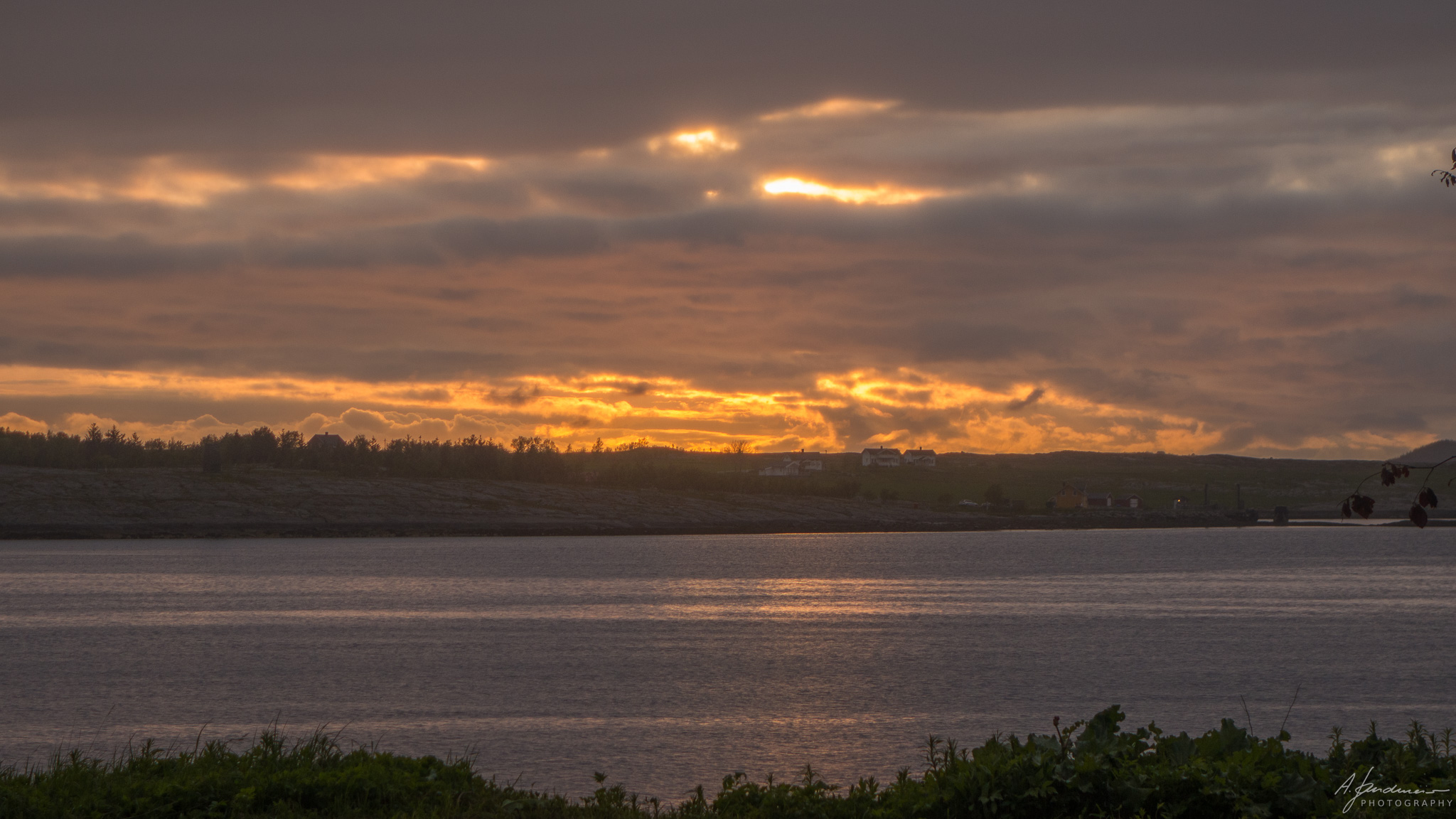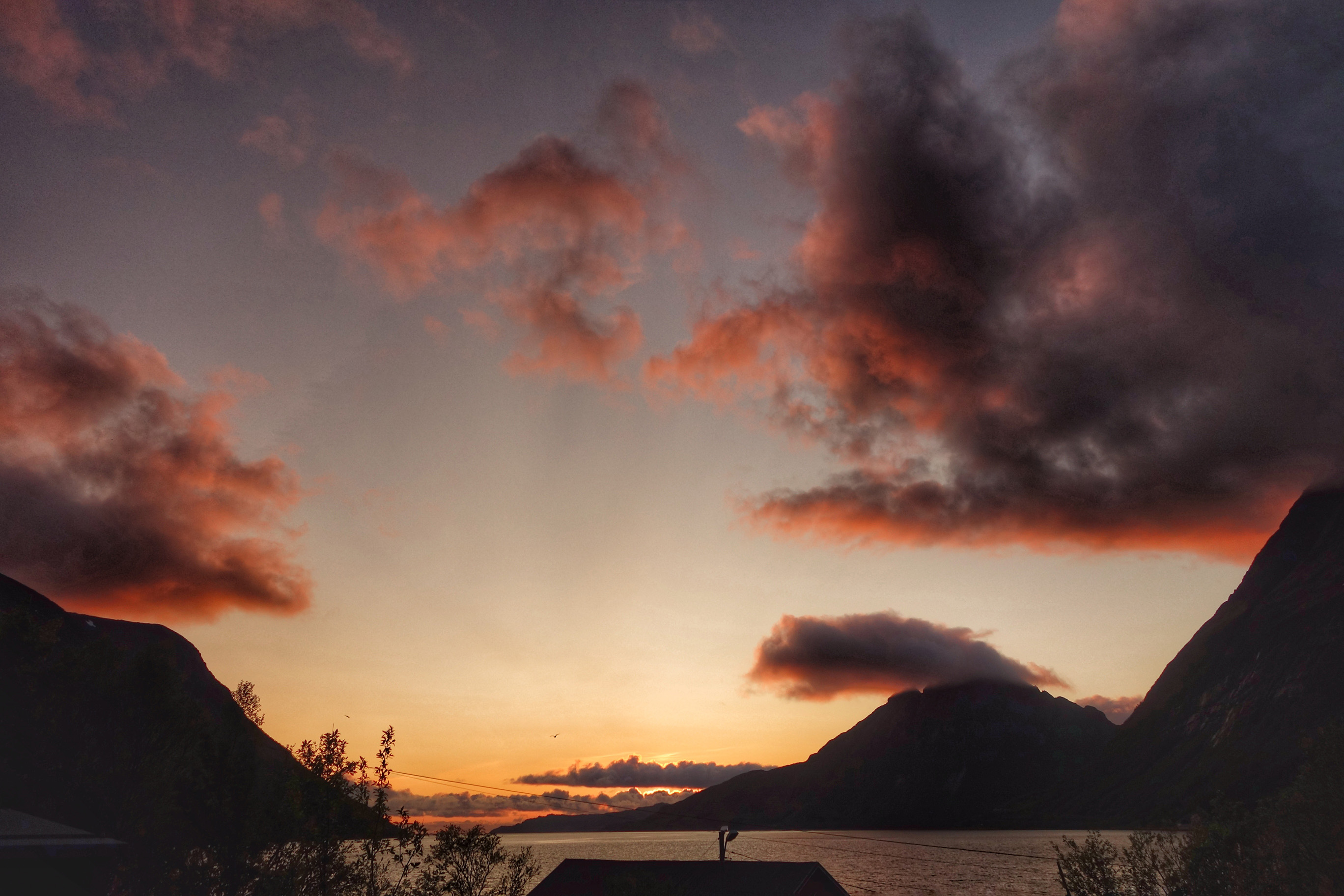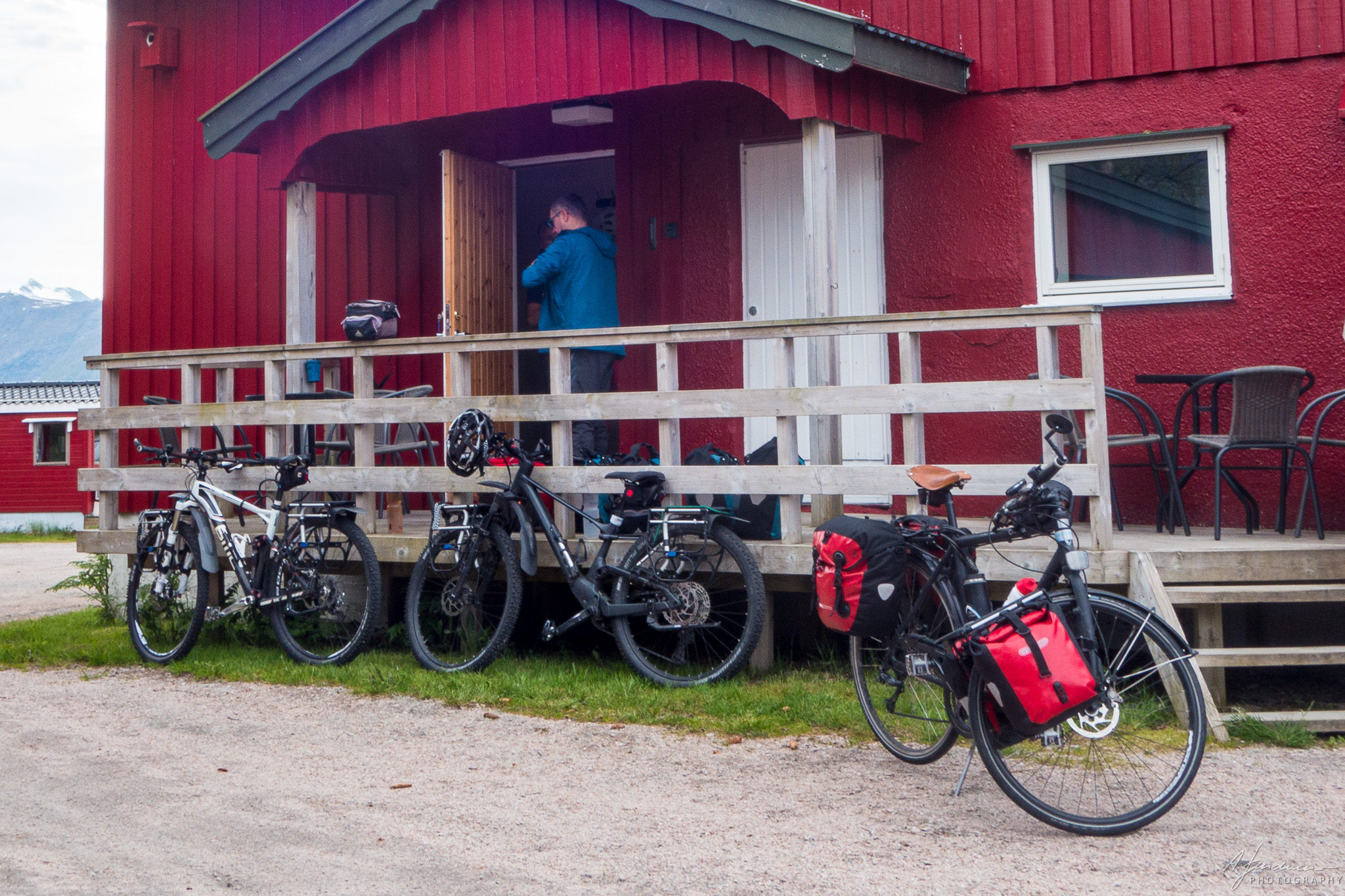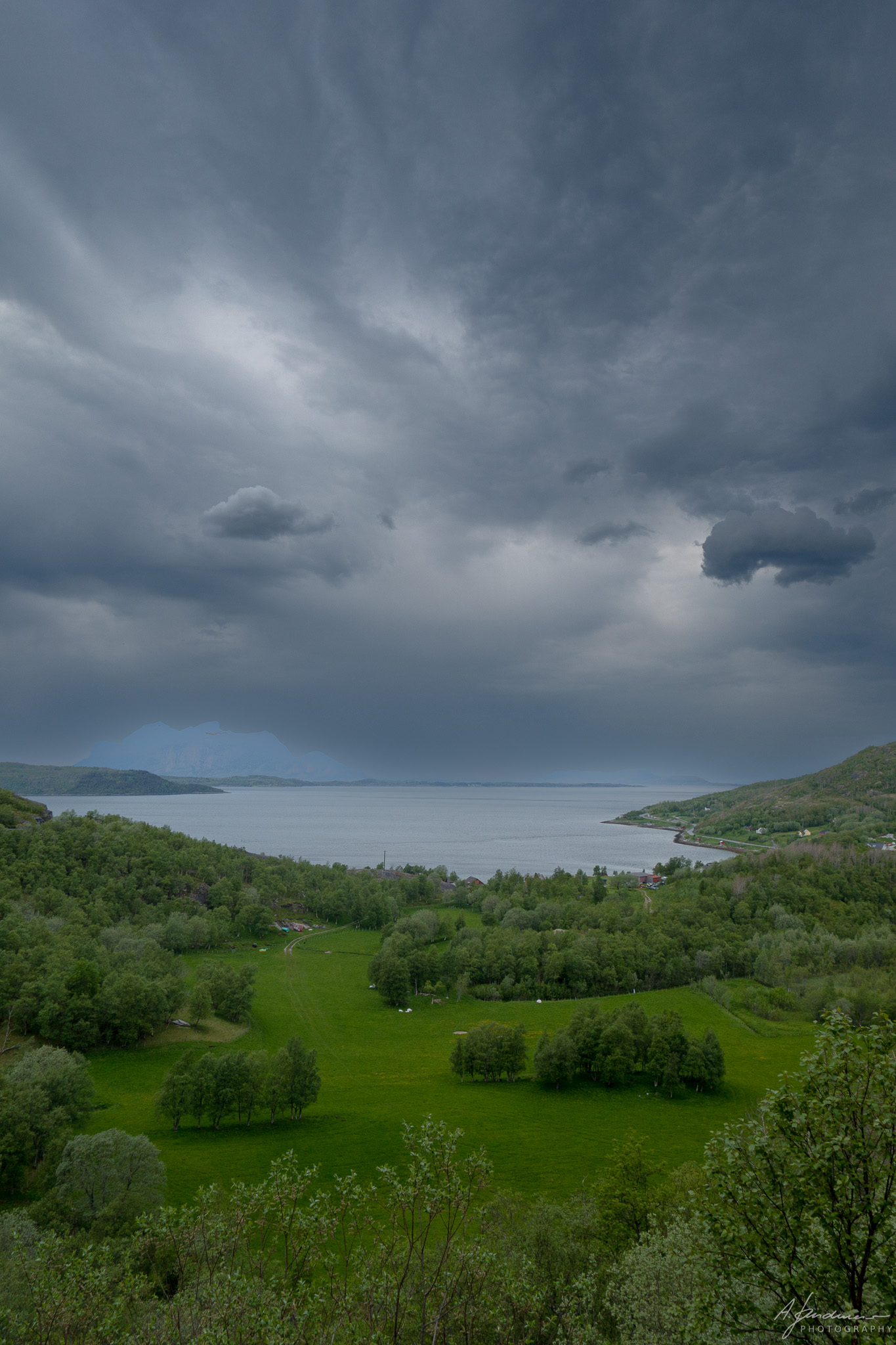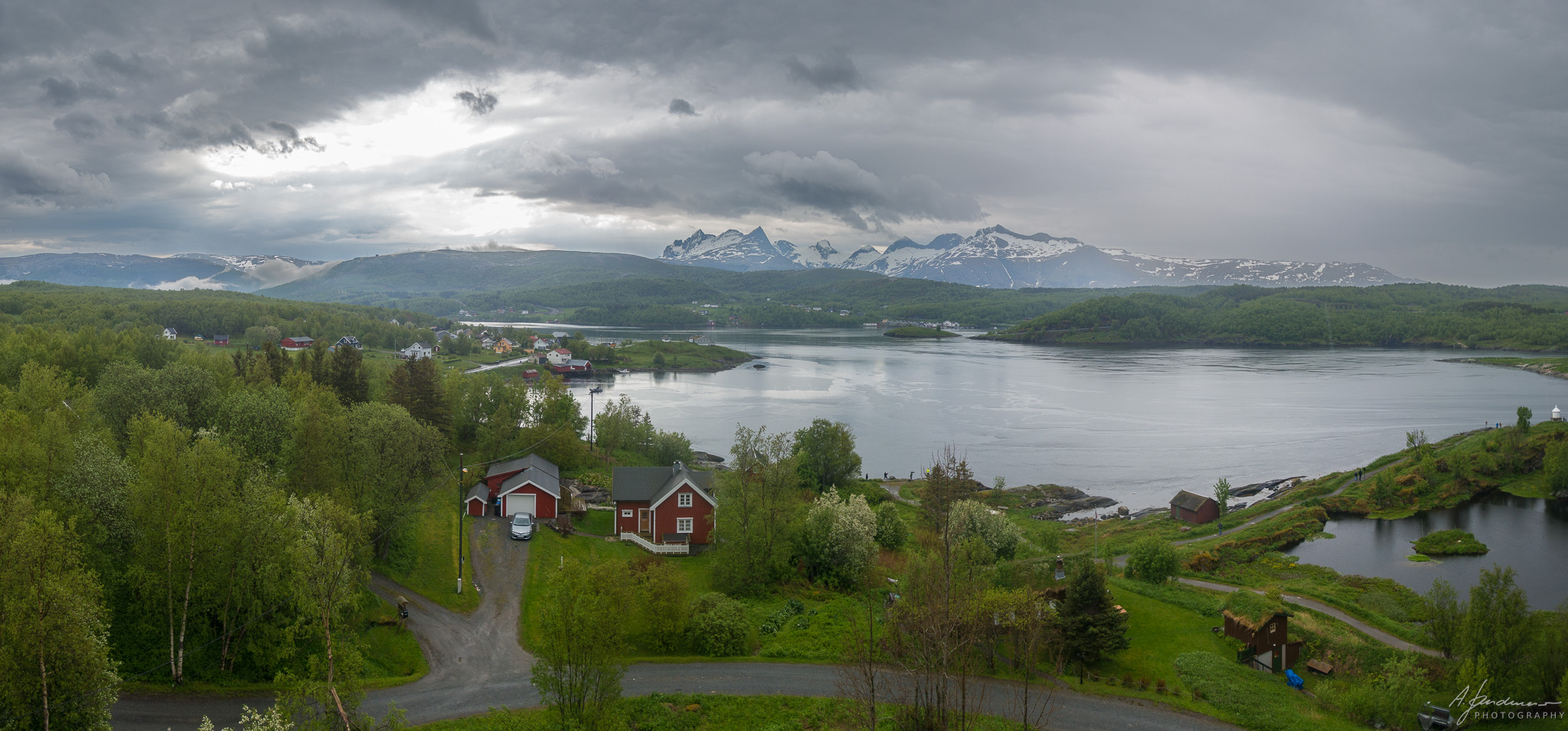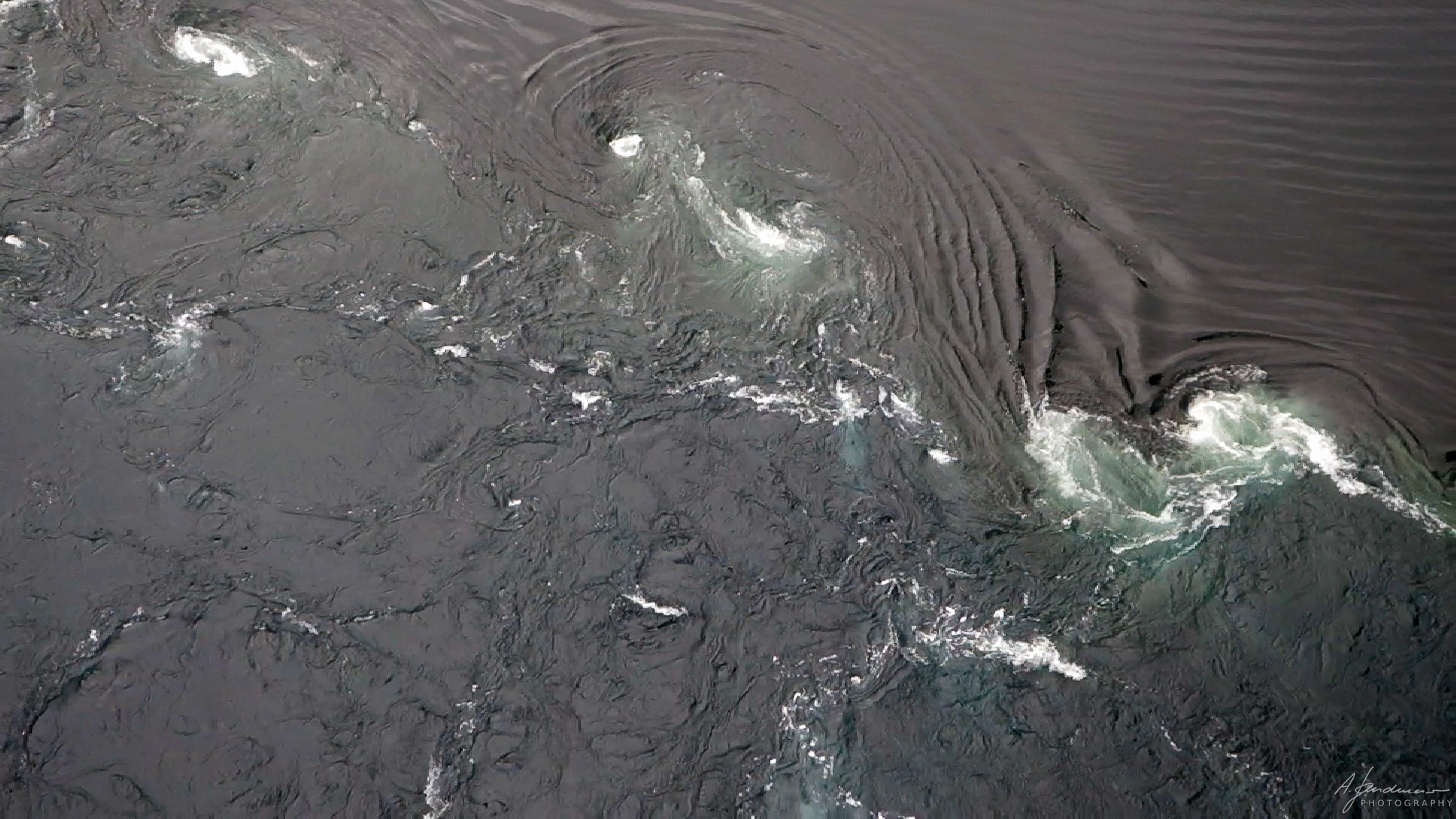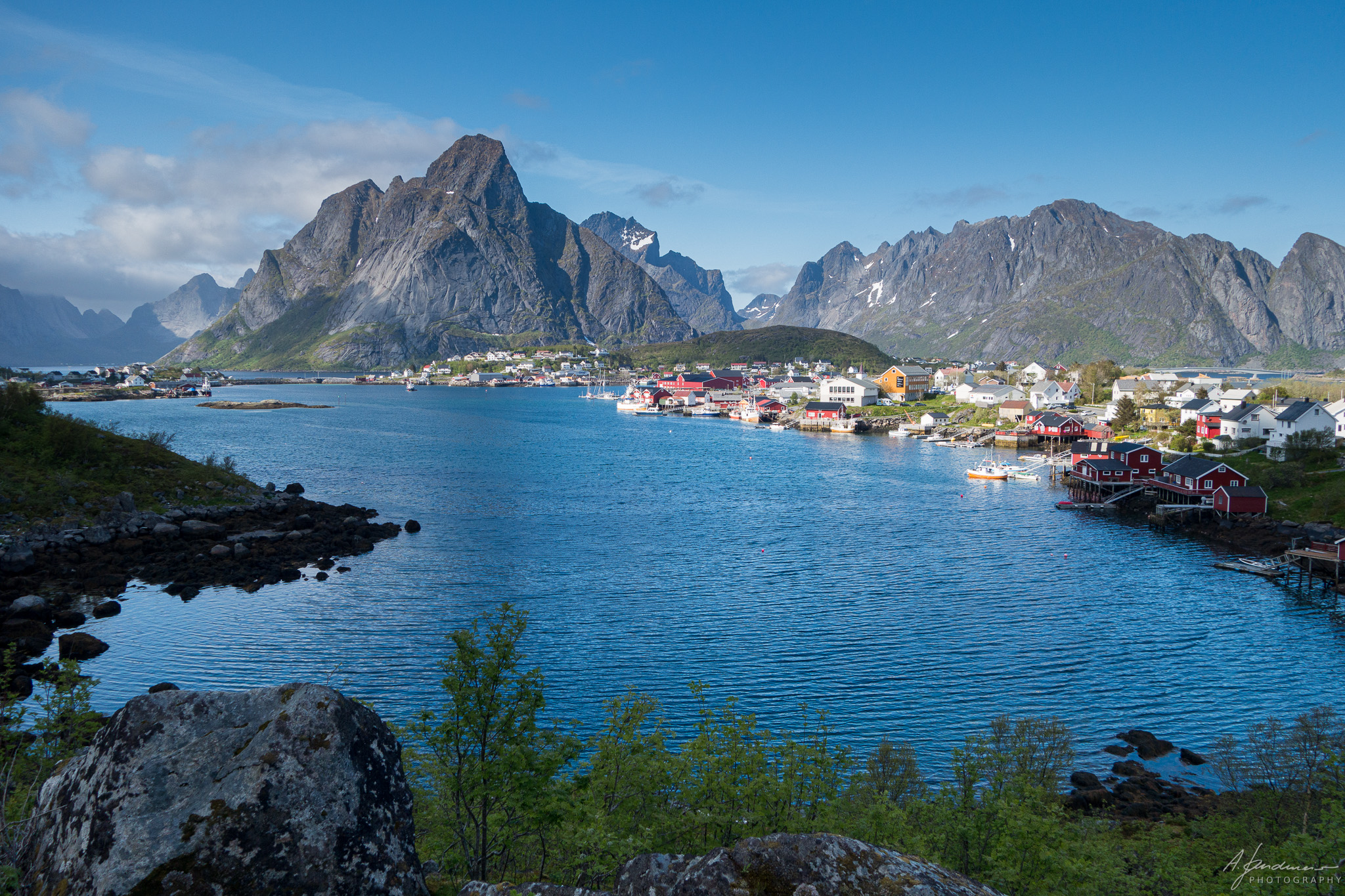13. 6. 2023 - 25 km / 300 hm Bodø - Reine
On our today's stage we let ourselves be transported above all on the ferry between Bodø and Moskenes (90 km over the open sea) to the Lofoten, a group of islands off the Norwegian coast. To our great joy, we are greeted by extraordinarily friendly sunny weather.
To keep our legs going, we drive from the ferry port a few kilometers further south to the village of Å. Unclear to recognize, the village with the shortest town name. We are particularly interested in the countless racks full of the well-known stockfish with a rather strong smell.
Stockfish is the oldest export of Norway. Its production is of great importance, especially for northern Norway, and has been an important source of income for the people there for centuries. The best quality is obtained on the Lofoten islands of Værøy and Røst. The main export markets are Italy, Sweden, the USA and Nigeria. In 2010, the export of all stockfish products amounted to NOK 650 million, which corresponds to a volume of 7,845 tons.
Stockfish is a natural product free of artificial additives, and the production process is resource-friendly. Only the water is removed from the fish, so all the nutritional values are retained. Cod, saithe, ling, tusk and haddock are used for production. After catching, the head and innards are removed and two fish bodies are tied together at the tails. Thus, they are hung on the drying racks and remain there for 2-3 months. The heads are dried separately. The nutritional value of one kilogram of stockfish is equal to that of five kilograms of fresh fish. Stockfish, if properly stored, can be kept indefinitely.
Dinner at the restaurant Gammelbua in Reine. Historic and cozy restaurant with the finest cuisine, highly recommended.
Å - The village with the shortest town name

Stockfish Drying Racks
